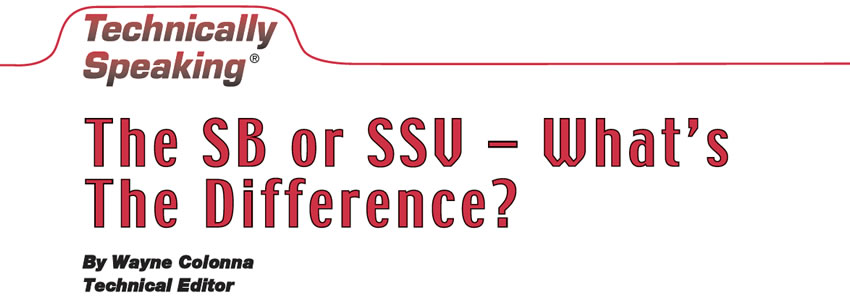
Technically Speaking
- Author: Wayne Colonna, Technical Editor
Often, DTCs related to the solenoid switch valve (SSV) in any 41TE or 42LE transmission are misinterpreted as a problematic solenoid body (SB). This may be attributed to the use of the word “solenoid” in the code definition. Code 37 is the solenoid switch valve stuck in the TCC position, and 47 is the solenoid switch valve stuck in the L/R position. Either of these will place the transmission in “limp mode.” The solenoid switch valve is not in the solenoid body but in the valve body (see Figure 1).
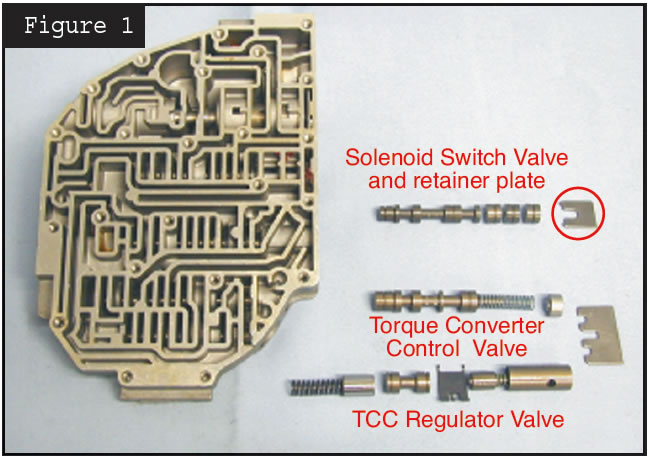
One of the primary purposes of this valve is to allow the No. 3 solenoid to perform two different jobs. It can apply the low/reverse clutches for a first-gear take-off and then become a TCC solenoid anytime after a shift into second has occurred. This is why the No. 3 solenoid is referred to as the LR(L)/LU solenoid.
The partial hydraulic diagram in Figure 2 focuses on how fluid pressure passing through the low/reverse solenoid (when energized) is routed through and past the solenoid switch valve to the low/reverse clutch. This is initially accomplished by the presence of line pressure acting on the left end of the valve and stroking it to the right.
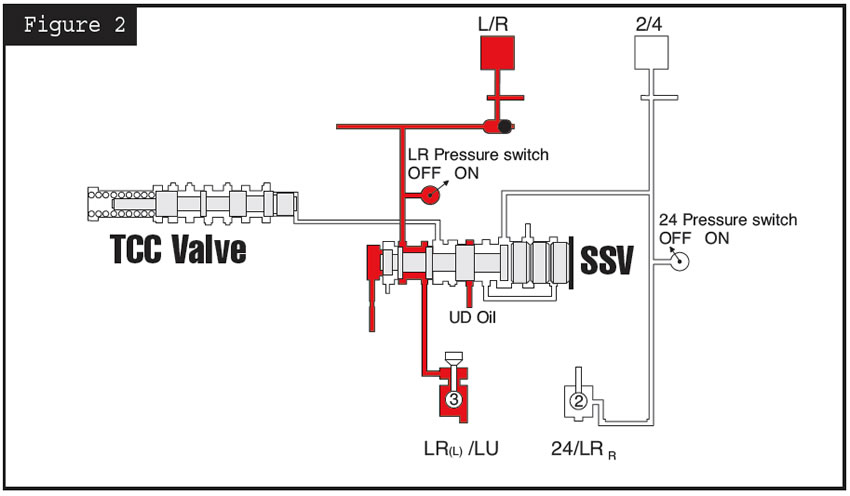
When a shift into second takes place, second-gear oil is directed to the right end of the valve. Underdrive-assist oil is routed between shift plugs 2 and 3. With these areas being larger in diameter than that on the left side of the valve, the greater force pushes the valve to the left. This now allows the oil coming from the L/R solenoid to be routed to the TCC valve through the solenoid switch valve. With this switchover, the L/R solenoid can act as the TCC solenoid (see Figure 3).
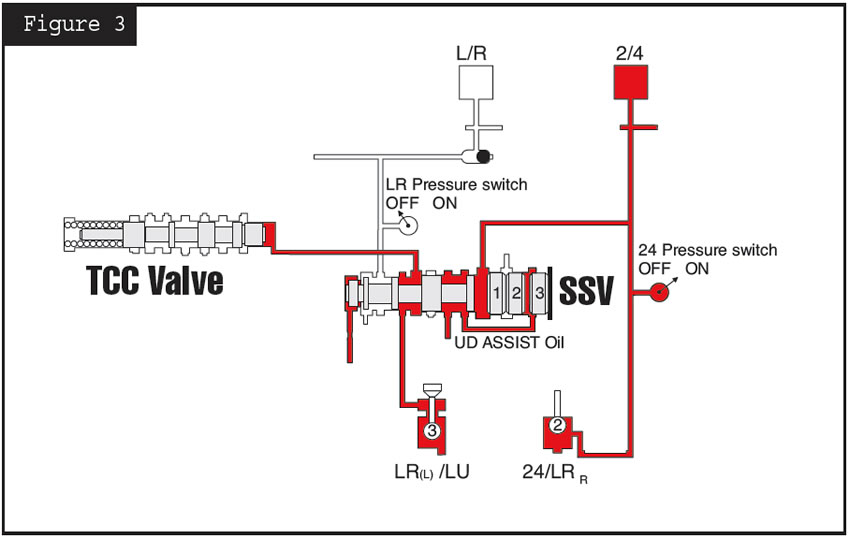
Code 47 results when this valve sticks to the right even after an upshift to second or higher gear. This allows the oil passing through the energized L/R solenoid to apply the L/R clutch at the time the TCM commands lockup (see Figure 4). The TCM will suddenly notice illegal L/R pressure-switch activity as well as the absence of sufficient engine-speed drop. At the same time, the driver will suddenly notice excessively harsh and violent banging of the transmission due to geartrain tie-up each time the computer tries to apply lockup. At some point when the conditions are met, the TCM will set code 47 and failsafe the unit to second gear.
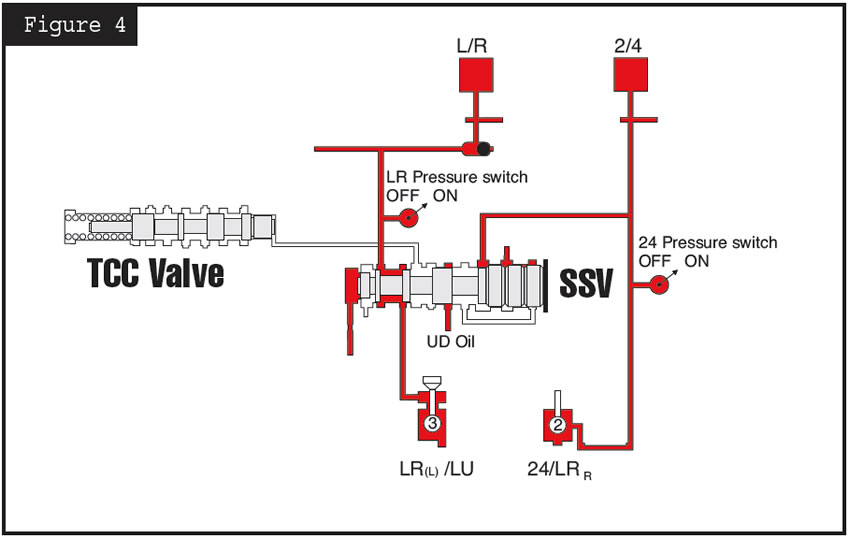
In contrast to code 47, code 37 is a silently produced code. When the vehicle shifts into first gear, the solenoid switch valve should stroke to the right. If it remains stroked in the lockup position (to the left), when the LR(L) /LU solenoid turns on to apply the low/reverse clutches for first gear, it strokes the TCC valve instead (see Figure 5). This will not stall the engine, as only the underdrive clutch is applied, and with the torque-converter clutch engaged, the underdrive drum would simply spin at engine speed. If the TCC valve were stuck and the solenoid switch valve stroked properly, a stall condition would occur when the vehicle was coming to a stop.
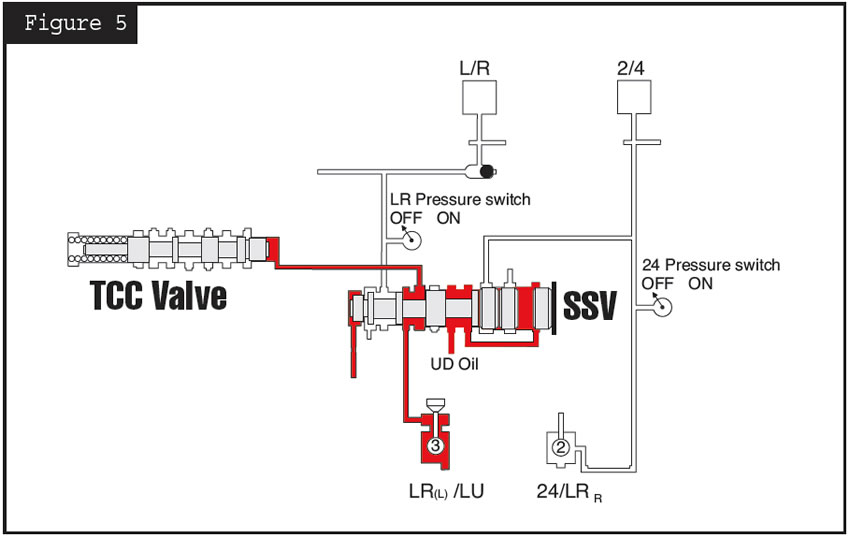
Other known causes of code 37 or 47 have been the absence of the solenoid switch valve’s retainer, shown in Figure 1. This retainer can easily fall from the valve body during overhaul and go unnoticed. With its absence, the valve will overstroke and not recover.
An error in the signal sent to the TCM for the shift-lever position via PRONDL switch or transmission range sensor would be another possibility. And finally, on rare occasions, high engine idle, or defective pressure switches or TCM also can produce code 37 or 47. But if code 37 or 47 is absolutely the result of a sticking solenoid switch valve in the valve body, the next question you need to ask yourself is, “Why is it sticking?” Maybe it is just a little debris floating around, or maybe …














